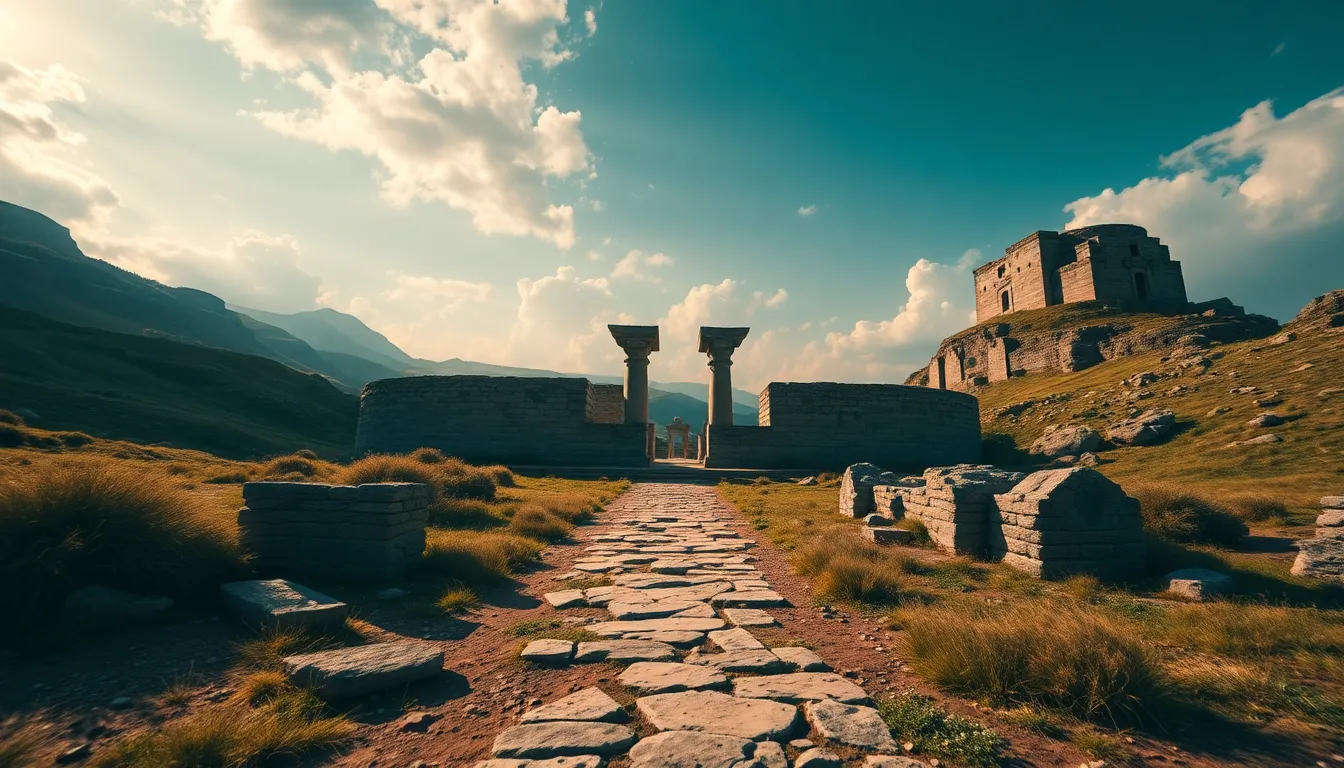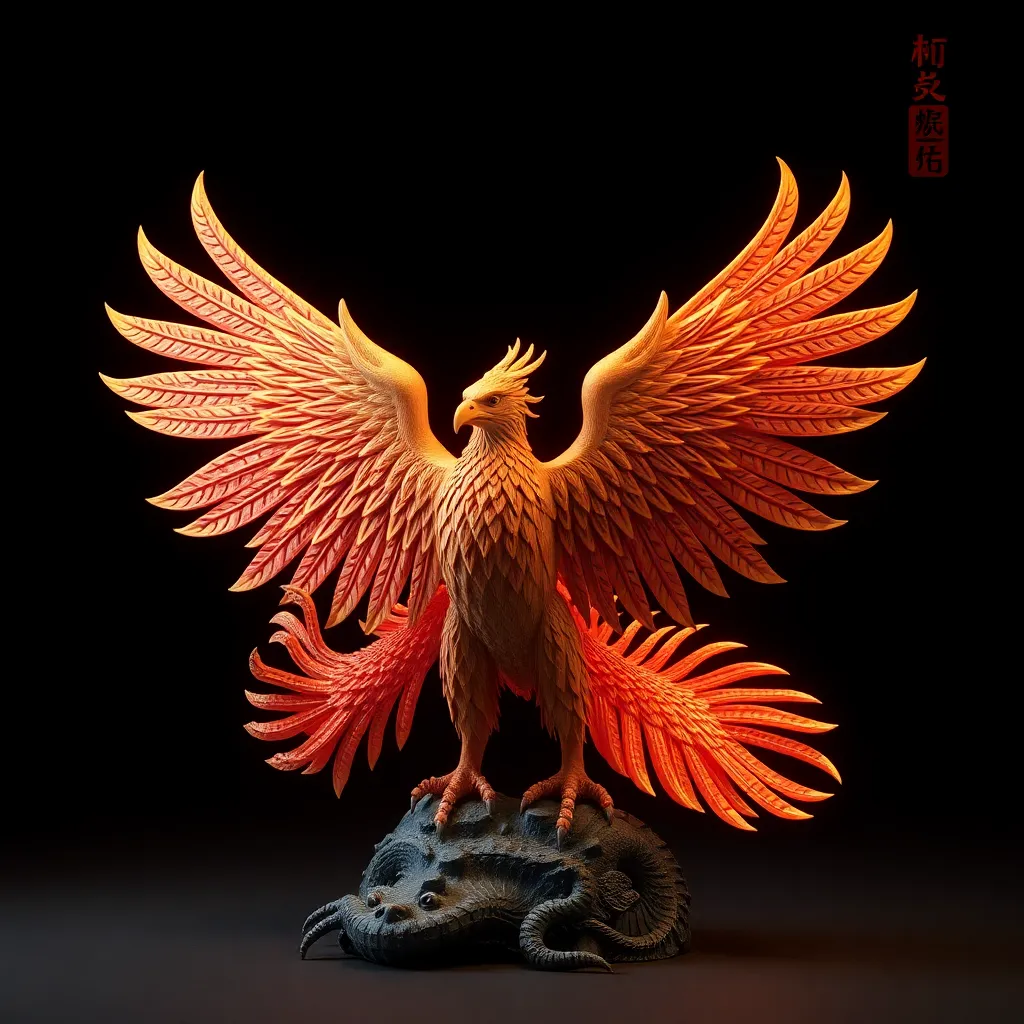The Flood Myths of Ancient Egypt: Water, Gods, and Creation
I. Introduction
The flood myths of various cultures share a fascinating commonality, depicting significant events where water plays a central role in creation, destruction, and renewal. From the biblical tales of Noah to the Mesopotamian Epic of Gilgamesh, these narratives often reflect humanity’s relationship with water, a potent symbol of life and death. In Ancient Egypt, water held particular significance, woven intricately into the fabric of their mythology and cosmology.
This article aims to explore the flood myths of Ancient Egypt, uncovering the rich tapestry of beliefs surrounding water, its deities, and its dual nature as both a nurturing and chaotic force. By delving into these myths, we can gain insights into how the ancient Egyptians understood their world and their place within it.
II. The Role of Water in Egyptian Cosmology
A. The concept of the primordial waters (Nun)
In Egyptian cosmology, the concept of Nun, the primordial waters, is foundational. Nun represents the chaotic waters that existed before creation, symbolizing a state of potentiality. This watery abyss was thought to be the source of all creation, from which the first land emerged.
B. Water as a symbol of chaos and creation
Water’s dual nature in Egyptian mythology is profound. On one hand, it symbolizes chaos and the unknown; on the other, it is a source of life and fertility. This duality is illustrated in various myths where the tumultuous waters of Nun give rise to the ordered world.
C. The duality of water: life-giving and destructive forces
Water is seen as both a life-giver, essential for agriculture and sustenance, and a destructive force capable of flooding and chaos. This duality is central to understanding the Egyptians’ reverence and fear of water.
III. Key Deities Associated with Water and Floods
A. Hapi: The God of the Nile and Fertility
Hapi, the god of the Nile, embodies the life-giving aspects of water. He was celebrated during the annual inundation, a time when the Nile flooded its banks, enriching the soil and ensuring bountiful harvests. Hapi was depicted as a robust figure, often adorned with plants and symbols of fertility.
B. Nun: The primordial waters and creator god
Nun is not only the primordial waters but also a creator god in his own right. He is often depicted as a water god, representing the chaos from which order emerged. His presence signifies the beginning of life and the cosmic struggle between order and chaos.
C. Other relevant deities: Osiris, Sobek, and Ra
- Osiris: Associated with the flooding of the Nile, Osiris symbolizes resurrection and the cycle of life. His death and rebirth are often linked to the seasonal inundation.
- Sobek: The crocodile god, Sobek, represents the Nile’s ferocity and unpredictability. He embodies both the nurturing and destructive aspects of water.
- Ra: As the sun god, Ra’s journey across the sky is believed to control the cycles of water and life, influencing the annual flooding.
IV. The Creation Myth and the Role of the Flood
A. The creation narrative in the context of water
The Egyptian creation myth often begins with Nun, the primordial waters, from which the first land emerged. This narrative emphasizes water as the source of life and the beginning of creation.
B. The emergence of land from the waters
In many versions of the creation story, the first land, known as the Benben stone, rises from the waters of Nun. This emergence symbolizes the transition from chaos to order, a theme prevalent in Egyptian mythology.
C. The symbolic importance of the flood in the creation process
The flood symbolizes renewal and the cyclical nature of life. Just as the Nile floods the land, bringing fertility, the creation myth reflects the constant regeneration inherent in nature.
V. Flood Myths in Egyptian Literature
A. Examination of ancient texts and inscriptions
Numerous ancient texts and inscriptions reference floods, illustrating the importance of this theme in Egyptian literature. These texts often highlight the duality of water, serving both as a life-giving force and a source of chaos.
B. The Pyramid Texts and Coffin Texts: References to floods
The Pyramid Texts and Coffin Texts contain numerous references to floods, depicting the gods’ interactions with water and its significance in the afterlife. These texts often illustrate the transformative power of water in both life and death.
C. Comparisons with other ancient flood narratives (e.g., Mesopotamian myths)
When compared to Mesopotamian flood narratives, such as the Epic of Gilgamesh, Egyptian flood myths reveal both similarities and differences. While both cultures emphasize the chaos of water, Egyptian narratives often focus on the regenerative aspects of the Nile’s floods.
VI. Historical Context of Flooding in Ancient Egypt
A. The annual inundation of the Nile
The annual inundation of the Nile was a crucial event in ancient Egypt, shaping agriculture and society. Each year, the river flooded its banks, depositing rich silt that fertilized the land, allowing crops to thrive.
B. Impact of the floods on agriculture and society
The floods had a profound impact on Egyptian society, dictating agricultural practices and influencing economic stability. The predictability of the floods allowed the Egyptians to develop a calendar and agricultural system aligned with the inundation cycle.
C. How real flooding events influenced mythological narratives
Real flooding events influenced the development of flood myths, as the Egyptians sought to explain and contextualize their experiences with the Nile. The interplay between mythology and lived experience created a rich narrative tradition surrounding water.
VII. Symbolism and Interpretation of the Flood Myths
A. The flood as a metaphor for renewal and rebirth
The flood serves as a powerful metaphor for renewal and rebirth. In Egyptian mythology, the cyclical nature of flooding represents the eternal cycle of life, death, and regeneration.
B. Moral and ethical lessons derived from the myths
Flood myths often convey moral and ethical lessons, emphasizing the importance of balance between chaos and order. The stories serve as reminders of the consequences of hubris and the need for harmony with nature.
C. The interplay of chaos and order represented in the stories
The narratives surrounding floods reflect the constant struggle between chaos and order, a central theme in Egyptian mythology. This interplay is crucial to understanding the Egyptians’ worldview and their reverence for the Nile.
VIII. Modern Perspectives on Egyptian Flood Myths
A. Archaeological findings and their implications
Recent archaeological findings have shed light on the importance of floods in ancient Egyptian society. Discoveries related to irrigation systems and agricultural practices highlight the profound impact of the Nile’s inundation on daily life.
B. The relevance of Egyptian flood myths in contemporary culture
Egyptian flood myths continue to resonate in contemporary culture, influencing literature, art, and spirituality. Their themes of renewal and the relationship between humanity and nature remain relevant today.
C. Comparative analysis with modern flood narratives
Modern flood narratives, such as those found in contemporary literature and film, often echo the themes present in Egyptian myths. The struggle against nature and the quest for survival are timeless themes that transcend cultures.
IX. The Influence of Egyptian Flood Myths on Other Cultures
A. Cross-cultural connections with neighboring civilizations
The influence of Egyptian flood myths can be seen in neighboring civilizations, where shared themes and motifs reflect a common cultural heritage. These connections illustrate the interconnectedness of ancient societies.
B. The diffusion of Egyptian mythology in the Mediterranean
As Egyptian culture spread throughout the Mediterranean, so too did its mythology, including flood narratives. This diffusion influenced Greek and Roman myths, where themes of water and creation also held significant importance.
C. Legacy of Egyptian flood myths in later religious texts
The legacy of Egyptian flood myths is evident in later religious texts, where similar themes of divine intervention and renewal are explored. The continuity of these narratives highlights the enduring power of water in human consciousness.
X. Conclusion
The flood myths of Ancient Egypt are a testament to the intricate relationship between water, creation, and the divine. Through the lens of these myths, we gain insight into the Egyptian worldview, where the duality of water as both a nurturing and destructive force is celebrated. The significance of the Nile’s annual floods perme



